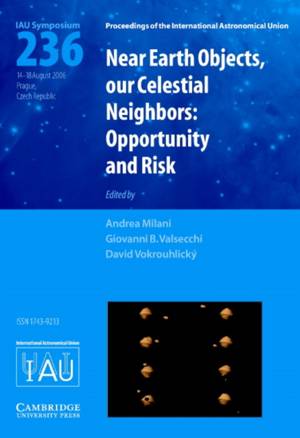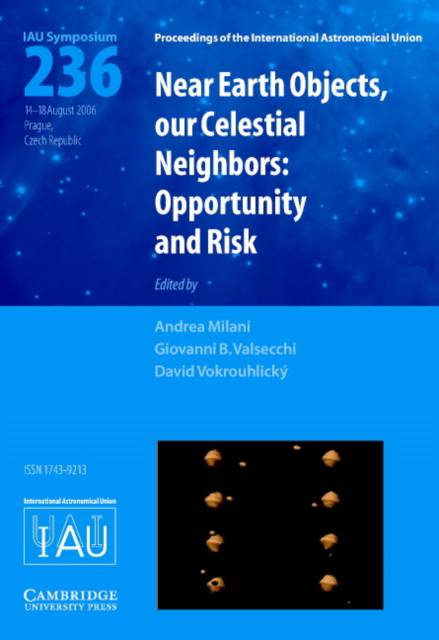
- Afhalen na 1 uur in een winkel met voorraad
- Gratis thuislevering in België vanaf € 30
- Ruim aanbod met 7 miljoen producten
- Afhalen na 1 uur in een winkel met voorraad
- Gratis thuislevering in België vanaf € 30
- Ruim aanbod met 7 miljoen producten
Zoeken
Near Earth Objects, our Celestial Neighbors (IAU S236)
Opportunity and Risk
€ 207,95
+ 415 punten
Omschrijving
Near Earth Objects (NEOs), asteroids and comets, are the closest neighbors of the Earth-Moon system. They allow research not yet possible on more distant bodies. The IAU Symposium 236 focused on the specific observation and modeling techniques for NEOs, including radar, exploration by spacecraft, measurement of non-gravitational perturbations; also on the next generation surveys expected to increase a hundred-fold the NEO discovery rate. With data from first generation NEO surveys, we now understand how they formed and evolve, dynamically and physically, opening a window on the universal astrophysical phenomenon of collision, leaving clear markings on the surfaces of planets, including the Earth. NEOs with orbits crossing that of the Earth are also a source of impact risks and potential NEO collisions with the Earth represent a long term threat. Mankind has to put in place a chain of mitigating actions; NEO astronomers have successfully put in place the first link.
Specificaties
Betrokkenen
- Uitgeverij:
Inhoud
- Aantal bladzijden:
- 524
- Taal:
- Engels
- Reeks:
Eigenschappen
- Productcode (EAN):
- 9780521863452
- Verschijningsdatum:
- 24/05/2007
- Uitvoering:
- Hardcover
- Formaat:
- Genaaid
- Afmetingen:
- 181 mm x 250 mm
- Gewicht:
- 1183 g

Alleen bij Standaard Boekhandel
+ 415 punten op je klantenkaart van Standaard Boekhandel
Beoordelingen
We publiceren alleen reviews die voldoen aan de voorwaarden voor reviews. Bekijk onze voorwaarden voor reviews.







